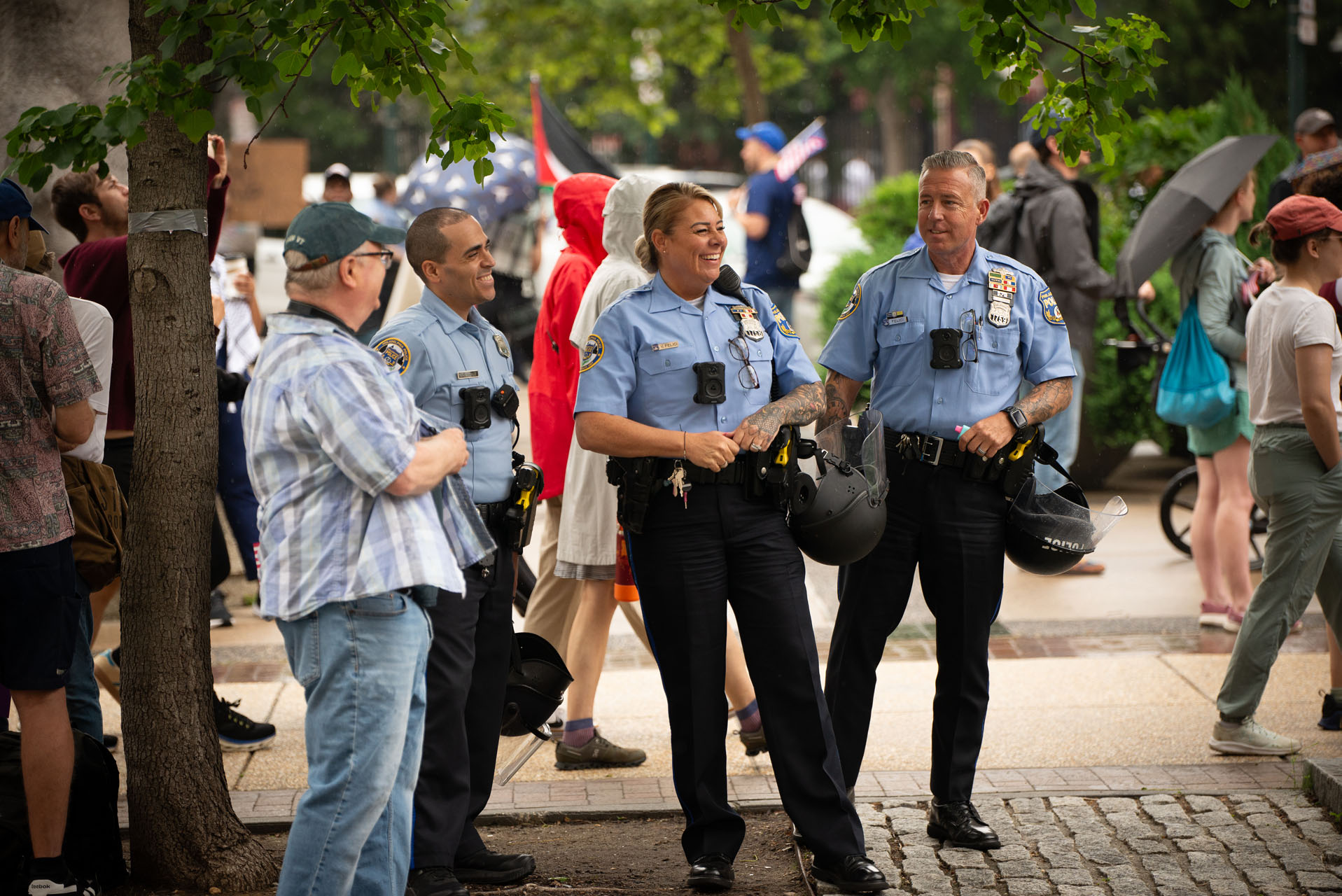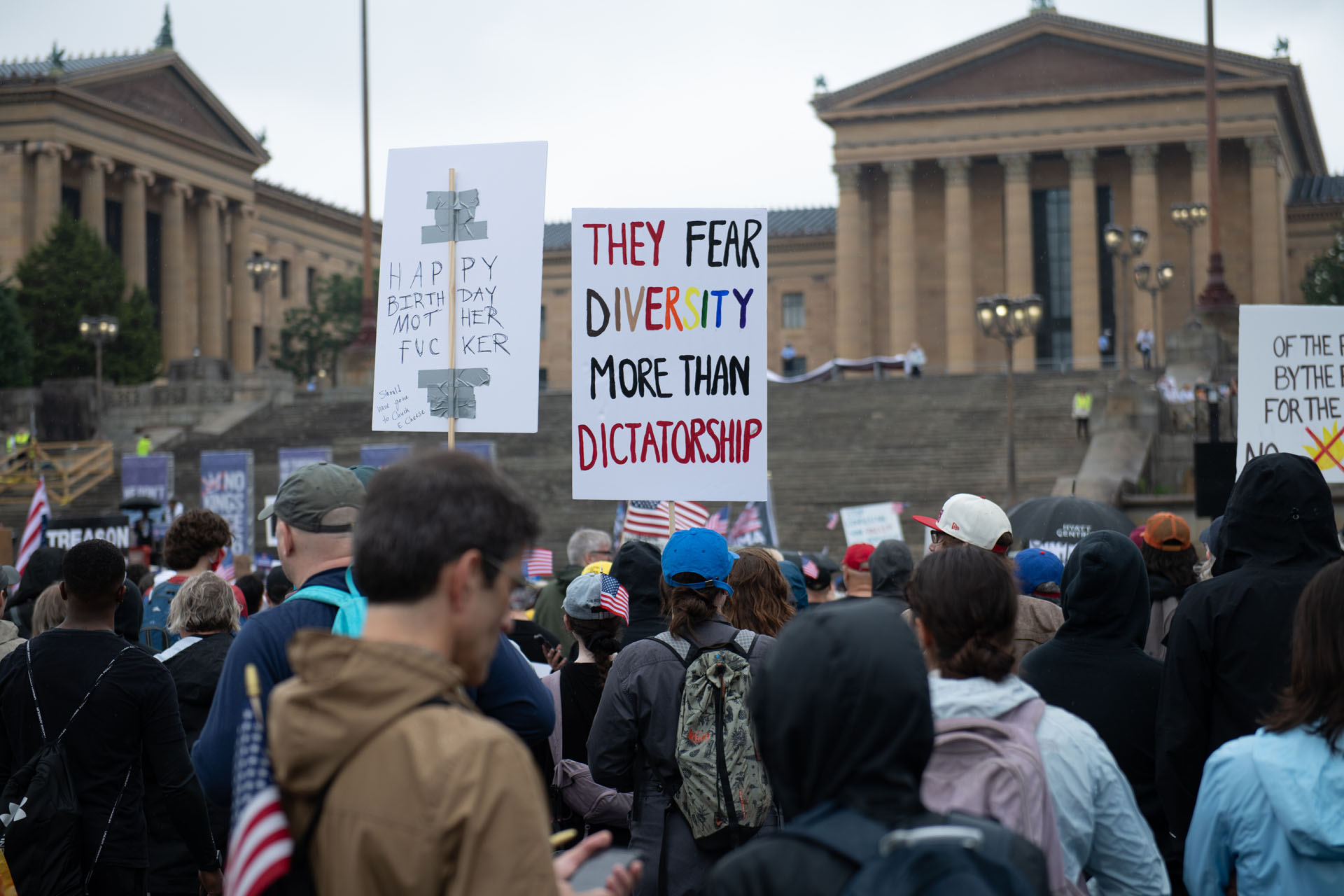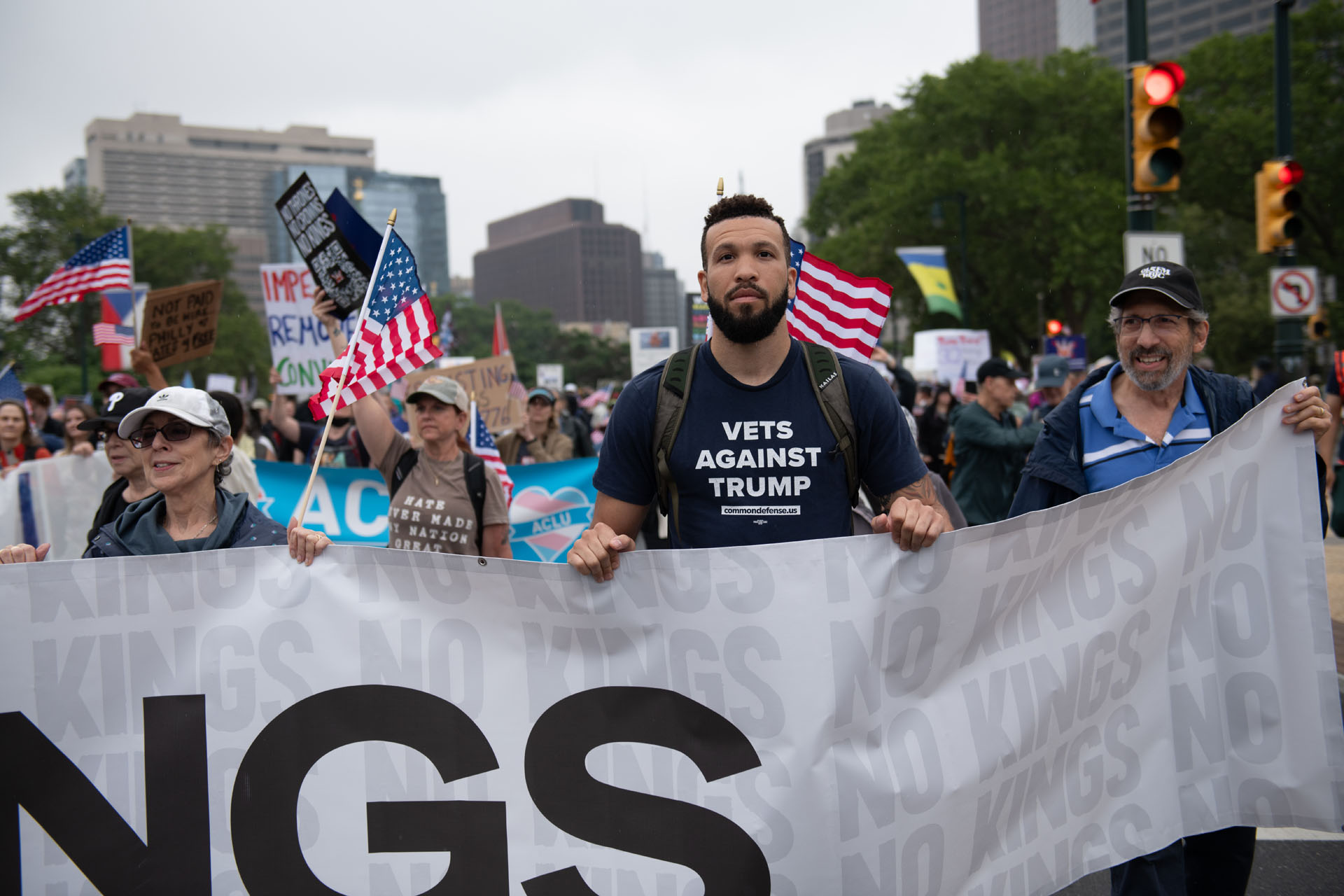Philadelphia, PA – June 14, 2025
On June 14, 2025, an estimated 80,000 people gathered in Philadelphia to join the nationwide "No Kings" protest movement, one of 2,000 demonstrations taking place across the United States. Across the country, millions of protesters took to the streets in cities large and small, united in their demand to end President Donald Trump’s executive overreach and his administration’s increasing intrusion into American life.

The protest in Philadelphia was peaceful, marked by a remarkable atmosphere of camaraderie and cooperation. People of all ages—young and old—joined in the march, with families and individuals from diverse backgrounds standing shoulder to shoulder. The scene was friendly, positive, and non-confrontational, with frequent moments of warmth and even laughter shared between protesters and police officers. This uplifting energy was in stark contrast to the more contentious scenes from protests elsewhere, such as clashes between protesters and L.A. County Sheriff's Department officers, or the inflammatory rhetoric from a Florida sheriff who threatened protesters with violent words, saying, "we will kill you graveyard dead."

The "No Kings" protests, which were organized by the 50501 group, have gained significant momentum since President Trump's inauguration. The movement was born out of a collective frustration with what many see as the president’s authoritarian-style consolidation of power. Trump’s executive actions have repeatedly challenged the constitutional balance of powers, with the president asserting near-total control over government functions. In many cases, courts have ruled against the administration, declaring its actions unconstitutional. These judicial losses have prompted the president to lash out, even targeting the judiciary with personal attacks, including denigrating judges he himself appointed.
As the Trump administration faces legal battles over its policies, the "No Kings" protests have continued to grow in strength. The movement’s central message remains one of resistance to an overreaching presidency. Across the country, demonstrators voiced their opposition to Trump’s increasingly controversial policies. From large cities to smaller towns, the calls for accountability and reform rang out loud and clear.

However, the demonstrations have not been without incident. In some areas, acts of violence marred what were otherwise peaceful protests. A politically motivated assassination of a Democratic lawmaker in Minnesota led to the cancellation of a planned "No Kings" event. Meanwhile, shots were fired during a demonstration in Utah, although the motives remain unclear as authorities continue their investigation. In Texas, the Proud Boys, a far-right extremist group, appeared at a "No Kings" rally, further intensifying concerns about the violent groups supporting the president that often seek to silence dissenting voices.
The nationwide "No Kings" protests, fuelled by growing dissatisfaction with Trump’s policies, reflect the country’s deepening political divide. But even as the movement faces external threats and difficulties with organization and agreement even among its own ranks, its message has resonated across America, uniting people from all walks of life in a call for justice and democracy.
In addition to the Philadelphia demonstration, reports from other major cities provide rough estimates of participation numbers. In New York City, around 50,000 people gathered in solidarity. Similar protests in Chicago and Los Angeles saw crowds of roughly 40,000 each. Smaller towns across the U.S. also witnessed their own gatherings, though on a lesser scale. These protests, though varied in size, were united in their demand for accountability from the administration.

The "No Kings" movement has not only garnered widespread support but is beginning to challenge the very power dynamics at play in American politics. And while the Trump administration has faced significant setbacks in the courts, such as the loss of several cases regarding its executive actions, the growing force of this protest movement suggests a growing organization and message for significant change in the country.
As these "No Kings" protests continue to unfold, one thing is certain: the momentum is on the side of those calling for reform. Whether or not the administration will listen remains to be seen, but the protests across the U.S. show that dissenters to Trump’s rule are not backing down anytime soon.
Meanwhile, in Washington, D.C., President Trump’s attempt to showcase his own power through a military parade—an event that was supposed to demonstrate his glory and control through an authoritarian style parade of pomp—fell flat. Video footage and photographs from the event revealed an empty spectacle, with bleachers only half full and large portions of the National Mall nearly devoid of attendees, despite claims from the administration and the U.S. Secret Service of potential crowds in the hundreds of thousands. The contrast between the starkly empty National Mall and the vibrant "No Kings" protests across the country could not have been more evident, symbolizing the deepening divide between the president’s perception of his power and the reality of widespread and increasing public dissent.
As the "No Kings" protests continue to spread, the public’s determination to hold the administration accountable for its actions is increasing. The future of this movement, and the country’s response, will likely play a pivotal role in shaping the political landscape for the remainder of the Trump presidency.
